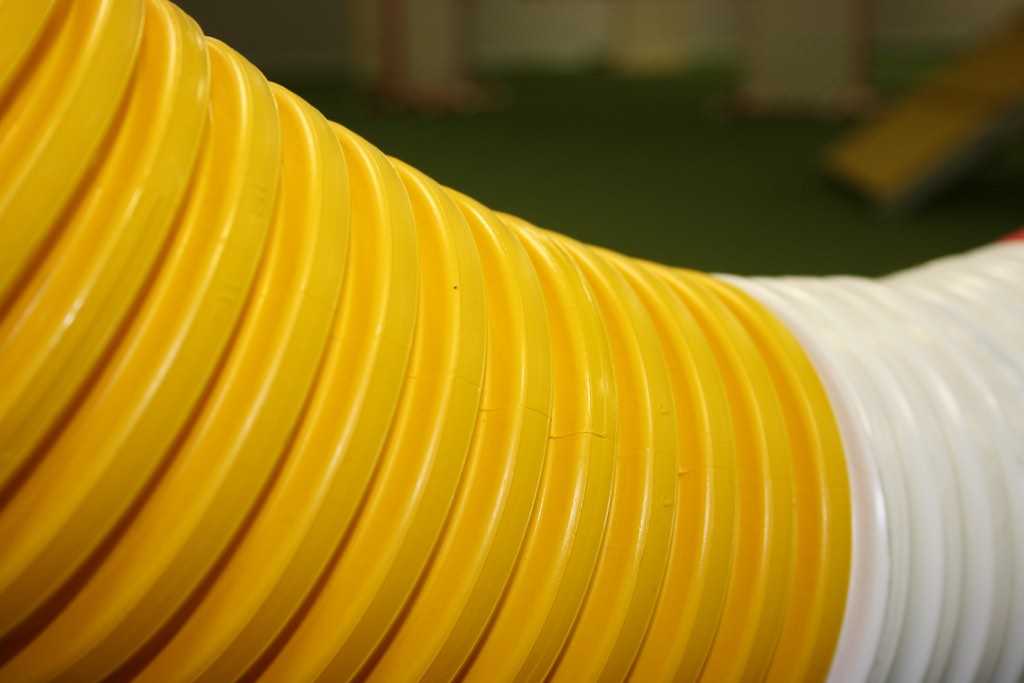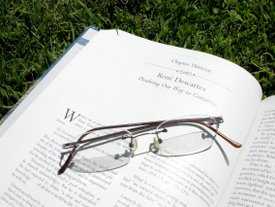My Agility Handling and Training Philosophy
27 Feb 2011
While preparing for my agility handling seminars I’ve been trying to “codify” my thoughts on handling and training.
When I give a seminar I don’t use a specific handling system; but I do have a philosophy for how I approach handling and training. A system might state when, how, and why to apply handling maneuvers; a philosophy describes an approach independent of the mechanics of a handling system. My philosophy is an amalgam of my personal experiences and what I’ve learned from many wise trainers. The following is a rough draft of my general themes on handling and training on which I expand in my seminars and classes.
Handling Philosophy
Handling is a language for communicating with your dog on course.
The handler’s goal is to always let the dog know the direction to next obstacle before they commit to the current obstacle. You want the dog to prepare their body to expend the correct amount of energy in the correct direction. e.g. collect and wrap the jump or extend and drive forward.
- If your dog turns the wrong way over a jump or spins after a jump you didn't let it know where to go before committing to that jump.
- Stay on your handling line; you aren't helping your dog by misleading it about where to go next.
Endeavor to be ahead of your dog - you don’t need to be faster, just smarter.
Your motion (direction, velocity, acceleration/deceleration, and lack of motion) is your primary cue; use it. Handling systems prioritize cues (motion, verbal, arms, etc.) differently and some restrict the use of cues in some situations in an effort to have those cues remain consistent when presented to the dog.
Handle with trust and confidence.
Trust - trust your dog. Once your dog has a foundation you aren’t helping your dog by:
- Keeping an eye on it by changing/rotating your body position. In doing this you don't use the physical cues you trained. You just need your dog in your peripheral vision.
- Waiting, pausing, hesitating to confirm that your dog took an obstacle. You will put yourself behind and often not show the dog the line to where to go next. It reduces your motion and muddies your body cues.
Confidence - you want your dog confident in your leadership
- Go off course with confidence – you don't want your dog to second guess your directions/cues.
- Your dog should never know when you screw up the course. While training either keep going and get back in sequence or reward your dog after the off course and then restart.
Once you are aware of your priority of cues, and your dog understands them, you can apply multiple cues to achieve an effect on your dog. “Blending” cues can also help get more collection/extension in a trial environment where a dog might be more revved up/shut down than at training.
Breathe, smile and laugh. Agility is supposed to be fun.
Training Philosophy
Paraphrasing Suzanne Clothier: whenever you interact with your dog, when “training” or not, ask yourself: “Would I treat someone I love that way?“.
As you train with your dog you are building a relationship with your dog and (hopefully) building your dog’s trust in you. You are also learning about your dog and your dog’s abilities (and your dog in you).
It’s only a reward to your dog if your dog finds it rewarding.
One goal of agility training is to have all handling options available for when you compete so you can choose the “best” (fastest => go for the win, lowest risk => going for the Q (or QQ)).
You want to be able to choose between handling options to find the best for your team. For example, if there were a serpentine of jumps I’ll often ask my students to try it all from one side, or with different combinations of crosses. You want to be comfortable executing with all handling approaches.
Train out “but”s. “I’d Front Cross at jump 5 but I can’t get ahead of my dog”. “I’d take a two jump lead out but Fluffy won’t stay at the line.” A strong foundation opens up handling possibilities.
How much responsibility are you putting on yourself? How much on your dog? Can/should you shift the balance?
Be very, very careful if you think you need to blame your dog. 99% of the time it was your fault. Really.
Stay engaged with your dog on course if something goes wrong or your instructor stops you to talk. Handling is a two way communication between you and your dog. Imagine I’m talking with you and someone calls to me and I immediately turn away from you and engage with them. How would that make you feel?
- While your instructor is talking to you give your dog something to do (sit/down stay, tug), you can also keep a hand on your dog. It maintains the connection between you.
Beware of applying unintended pressure on your dog:
- An exhale can be a correction to a sensitive dog
- As can disengaging from a sensitive dog
Remember the “rule of three”. Don’t let your dog continue to fail. Set your dog up for success and then gradually increase the difficulty.
Don’t get greedy (“just one more try/run”) you want to end on a success both for your dog and yourself. If you do get greedy and aren’t succeeding set up a sure fire success, reward and call it quits. Five minutes a day is better than one hour a week.
Sometimes it is best to ignore the rest of the numbers on the course. Having trouble with a section; work on it, reward your dog and take a break. You don’t have to complete the sequence. Really.
The more you can make practice look like a trial the more familiar it will be for you and your dog when you do trial. When you are sequencing/running full courses:
- From a handler's perspective treat every practice course like a trial course. Plan and execute. This exercises your mental preparation.
- Build pre-run, start line and post run rituals. Use them in practice too.
The dog you have in training may not be the same dog you have in a trial. Environment matters! Take your training to new locations and fun matches.
Breathe, smile and laugh. Agility is supposed to be fun.
What's In Your Philosophy?
I’ve been saying and doing these things while training for years but putting “pen to paper” and writing key areas of my approaches was a good exercise. It was hard to not expand notes like: “It’s only a reward to your dog if your dog finds it rewarding”. I’ll leave those for other articles or you can come see me and we can talk about them!
As a trainer I think it is helpful for students and potential students to know my philosophy. It helps them determine if I’m the right kind of trainer for them. You might find it useful to write out your philosophy or think about the training and handling philosophy you’d like your ideal trainer to have.
If you enjoyed this article won't you please:  Thanks!
Thanks!

